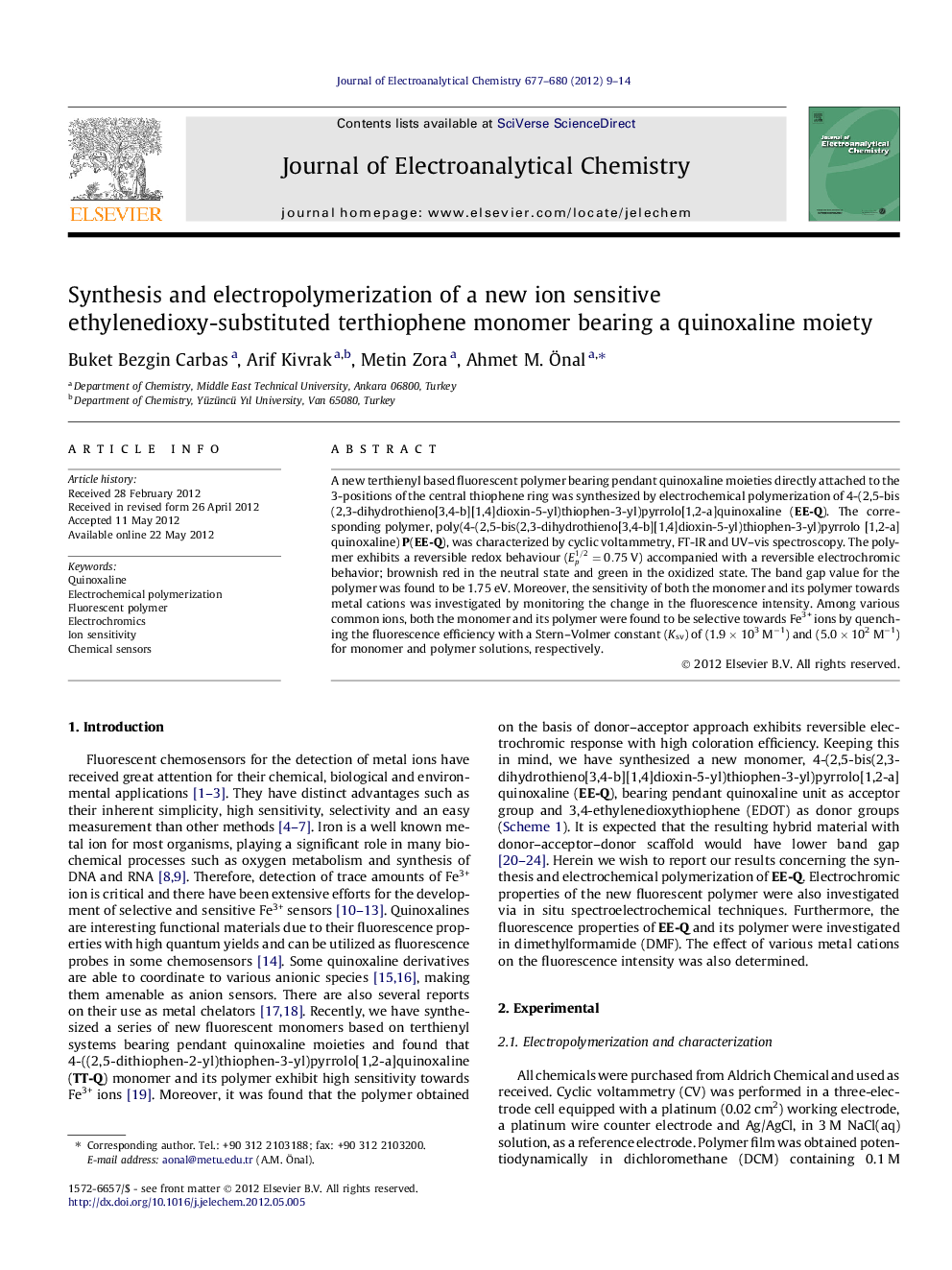| Article ID | Journal | Published Year | Pages | File Type |
|---|---|---|---|---|
| 219258 | Journal of Electroanalytical Chemistry | 2012 | 6 Pages |
A new terthienyl based fluorescent polymer bearing pendant quinoxaline moieties directly attached to the 3-positions of the central thiophene ring was synthesized by electrochemical polymerization of 4-(2,5-bis(2,3-dihydrothieno[3,4-b][1,4]dioxin-5-yl)thiophen-3-yl)pyrrolo[1,2-a]quinoxaline (EE-Q). The corresponding polymer, poly(4-(2,5-bis(2,3-dihydrothieno[3,4-b][1,4]dioxin-5-yl)thiophen-3-yl)pyrrolo[1,2-a]quinoxaline) P(EE-Q), was characterized by cyclic voltammetry, FT-IR and UV–vis spectroscopy. The polymer exhibits a reversible redox behaviour (Ep1/2=0.75V) accompanied with a reversible electrochromic behavior; brownish red in the neutral state and green in the oxidized state. The band gap value for the polymer was found to be 1.75 eV. Moreover, the sensitivity of both the monomer and its polymer towards metal cations was investigated by monitoring the change in the fluorescence intensity. Among various common ions, both the monomer and its polymer were found to be selective towards Fe3+ ions by quenching the fluorescence efficiency with a Stern–Volmer constant (Ksv) of (1.9 × 103 M−1) and (5.0 × 102 M−1) for monomer and polymer solutions, respectively.
Graphical abstractFigure optionsDownload full-size imageDownload as PowerPoint slideHighlights► New donor-acceptor type polymer bearing quinoxaline units is synthesized. ► Fluorescent monomer and its polymer were found to be sensitive towards Fe3+ ions. ► This makes them a promising sensor candidate for Fe3+ detection. ► Moreover, the polymer can be a potential precursor in electronic and optical applications.
